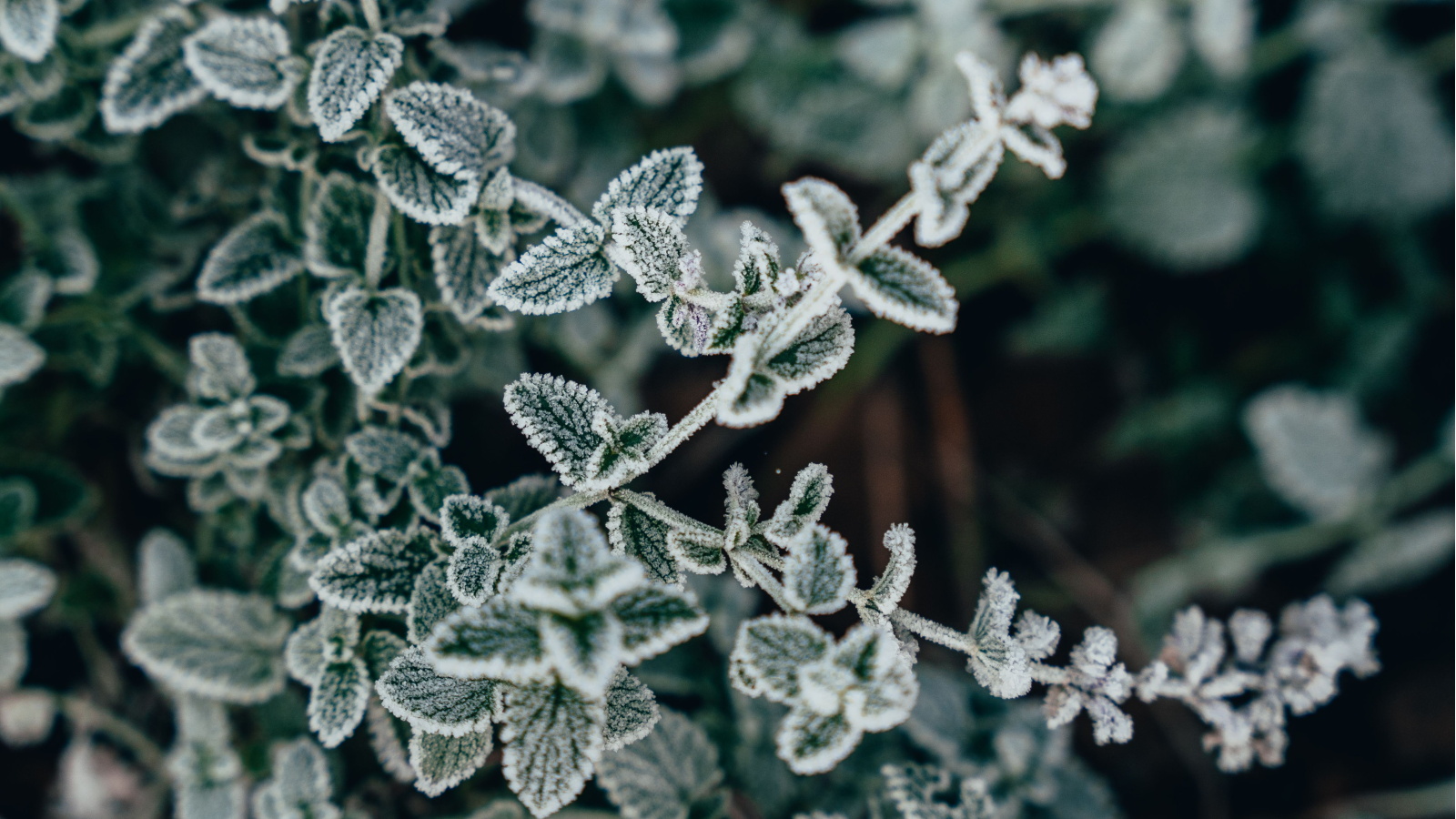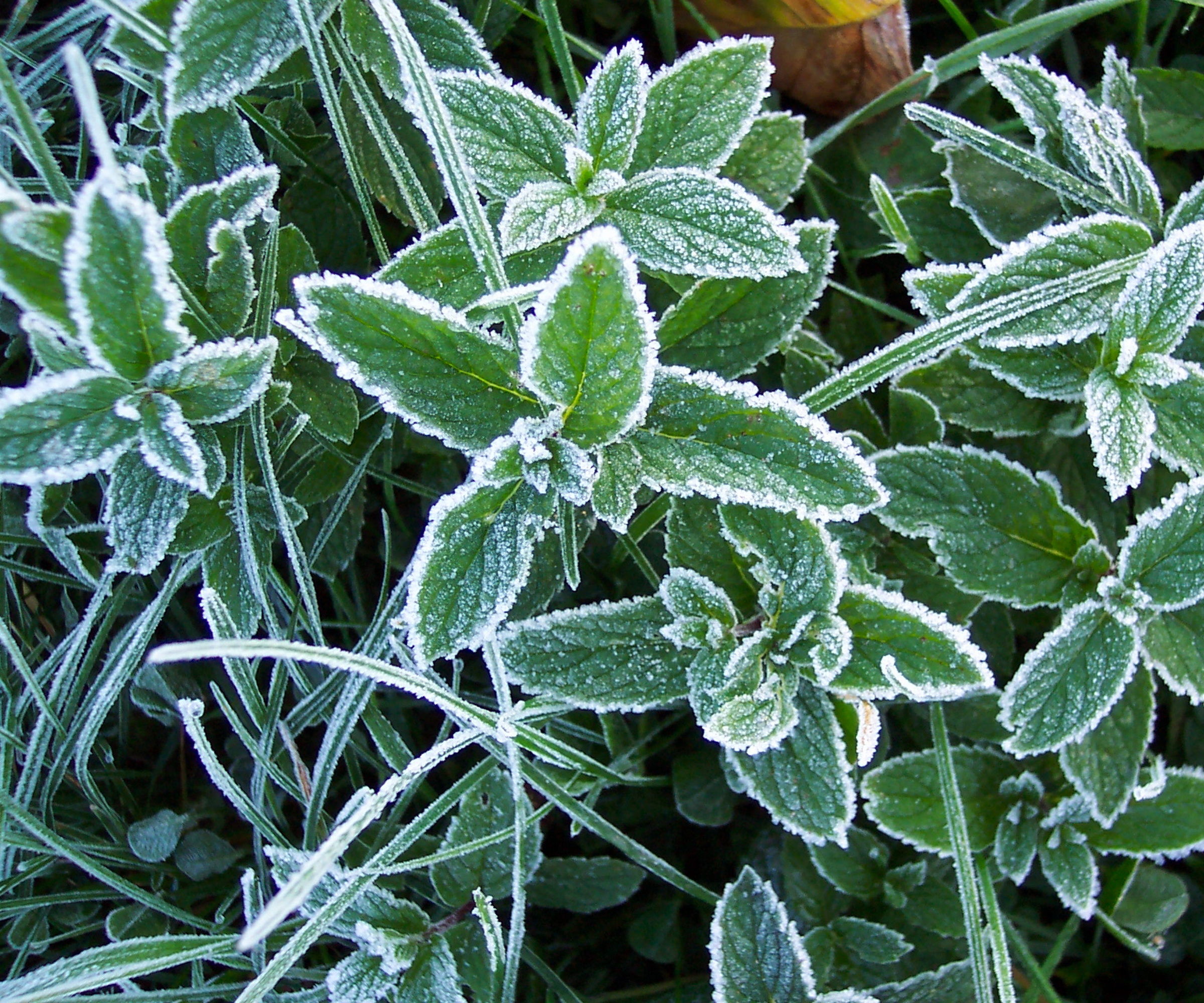
When you grow a wide range of plants in your yard, it can be tricky to figure out which need protecting in winter. Herbs can often be particularly difficult to judge, which might leave you questioning 'is mint frost-tolerant?'
Growing mint is fairly straightforward, so long as it receives plenty of sunlight in the warmer months. However, in the winter months, mint will stop growing as it enters a dormant season. At this point, you may be wondering if you need to protect mint from frost to get it through the coldest months.
Protecting tender plants is an important part of overwintering a garden, but those that are frost-tolerant can typically be left alone. Here, experts share whether mint is frost-tolerant, so you can take the right steps to get your mint plant through the harshest time of the year.
Is mint frost-tolerant?

You might find it surprising to learn that yes, mint tends to be frost-tolerant. It's one of the herbs that don't need winterizing and can be left alone as the freezing temperatures settle in.
Mint is a perennial plant, meaning it will dieback during the frosty season before putting on new growth in spring. You therefore shouldn't mistake its dying back in winter as the plant being dead altogether.
'Mint is very frost-tolerant. It can grow in most zones and generally survive in temperatures as low as -20°F,' explains garden expert, Jeremy Yamaguchi, from Lawn Love.
There are lots mint varieties you can grow - whether you want to grow mint indoors or outdoors. The majority of these varieties thrive across US hardiness zone 3 to zone 11.
However, just because the answer to 'is mint frost-tolerant?' is yes, doesn't mean you can expect to harvest mint during winter: 'Frost can make mint die back to the roots,' says plant nursery expert Tammy Sons.
While it isn't essential to protect these plants from frost, you could use these frost cloches from Walmart, or this frost cloth from Amazon to provide extra insulation for your mint's roots. Alternatively, you can move your mint plants into a cold frame.
FAQs
How do you keep mint productive in winter?
When mint is growing outdoors, it will typically dieback in winter before returning in spring. However, it is possible to keep mint productive during winter by growing it indoors. Ideally, you should keep your mint on a warm, sunny windowsill. You might find it beneficial to use an indoor greenhouse to provide extra insulation, too.
Why has my mint not grown back after winter?
Even though mint is frost-tolerant and it isn't an essential requirement to winterize this plant, it is possible for mint roots to become damaged by frost during particularly cold spells. In this case, the plant may be killed off and won't return when temperatures become warmer again. To prevent this, you might consider mulching to insulate the roots of your mint plant during winter.
You can get more out of your mint plant by saving mint seeds before your plant dies back for the season. Mint flowers in spring and summer, so aim to collect seeds in fall before early frosts. You can then store your seeds somewhere cool, dark, and dry until it's time for sowing seeds outdoors in spring.







